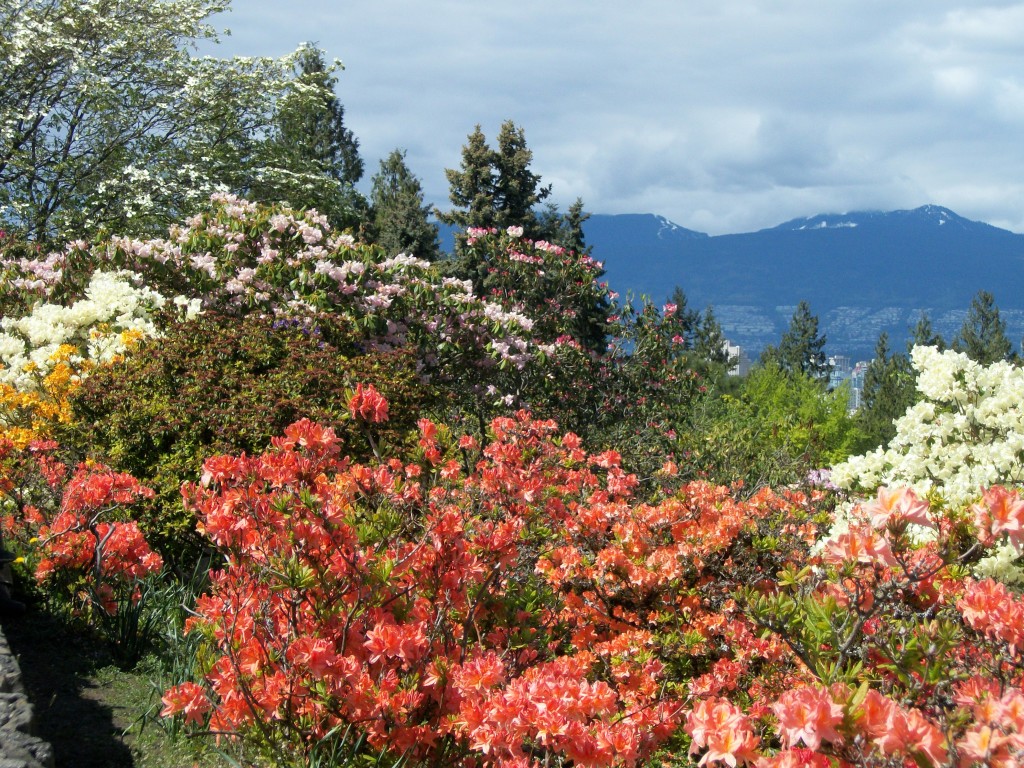It’s Still Just Dirt, The Tillsonburg News – April 2016
by Angela Lassam
It appears we can grow them in Southern Ontario according to Kevin Kavanagh who is at South Coast Gardens near Turkey Point. He has established trial gardens with a variety of unusual trees, shrubs and perennials typical of the Southeastern United States where he spent his earlier years. He is testing the suitability of the more southern plants to the Carolinian forest region which is the most southern of our area. His gardens will be open from May 7th, website: SouthCoastGardens.ca.
Magnolias date back over 100 million years predominately in South East China and Japan also two centuries ago found in Europe. They evolved before the pollinators we all recognize when beetles were their pollinators. They would crawl down into an unopened flower and pollinate it so it is already pollinated when it opens. They are unusual as the flower buds form in the fall and look like furry spikes, flower in Spring and some have a second flowering late July/August. They form bright red seeds which small rodents and birds disperse. Sadly they have insignificant fall color just yellow and brown. Here in Ontario there is one native species called Cucumber tree (Magnolia acuminata) and another is Tulip tree (Liriodendron tulipifera ). There is a small garden collection called Eight Little Girls with names such as Ann, Betty and Susan. All would be a good addition to any landscape.
Azaleas and Rhododendrons are plants we are more familiar with but we must understand the soil they need. A low PH soil, rich in humus (rotted forest junk is good!) is necessary. Sandy soil you need to dig a big hole and fill with rich soil and top with mulch. Clay soil you need to plant on top of the soil and mound with rich soil and then mulch. They have fine roots and only go down 2 or 3 inches so do not need to be disturbed. They do not like the winter sun and wind from the south so location should be considered. Leaves will curl in winter to conserve moisture. Evergreen rhododendrons would benefit from overnight protection in spring to keep soil soft and retain moisture to the plant even an old bed sheet if bad weather is predicted. Plants to try are the Northern Lights Series which are hardy and for rock gardens there is Lemon Dream and Patty Bee. An early spring flowering one is Cornell Pink but there are many varieties to be found.
Once again this time of year is a time for maintenance and cleaning. The birds who help us in our gardens all summer collecting the bugs need their nest boxes repaired or cleaned out ready for new life. Consider a DIY project of a nest box with barn board set on a post for the bluebirds. A nest box on a post is vulnerable to predators (squirrels, mice) so an inverted cone placed below the box is a good deterrent. Also the nectar feeders for the Orioles and Humming birds will need to be clean as they will arrive soon.
If you are looking for a laugh join us for a presentation by David Hobson , a story teller, gardener and humorist talking about ‘plants to impress your neighbour’.
Next meeting May 3rd @7.30 pm in the Seniors Centre Auditorium, Tillsonburg Community Centre. Members and non-members welcome.
For information about the Tillsonburg Horticultural Society visit tillsonburghorticultural.ca.online.
